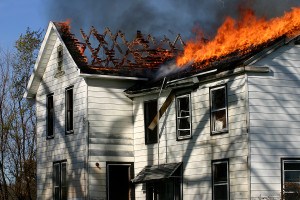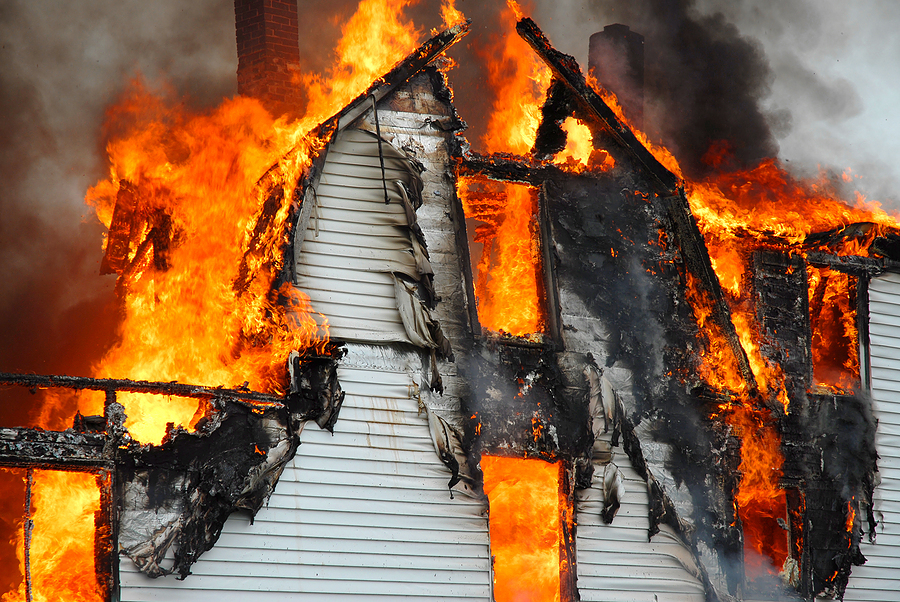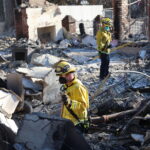 Last year, in response to an invitation from the U.S. Fire Administration, 28 national organizations representing the fire service, fire researchers and other stakeholders in home fire safety came together at the Maryland Fire and Rescue Institute in College Park, Md., to explore how changing building construction methods, materials and building contents are affecting the way fires grow and develop in today’s homes.
Last year, in response to an invitation from the U.S. Fire Administration, 28 national organizations representing the fire service, fire researchers and other stakeholders in home fire safety came together at the Maryland Fire and Rescue Institute in College Park, Md., to explore how changing building construction methods, materials and building contents are affecting the way fires grow and develop in today’s homes.
The expected outcomes, as stated by USFA, of the workshop were to:
- Enhance the awareness of fire service and life safety officials of the changing and emerging fire and products of combustion risks to residential building occupants.
- Produce a document that clearly identifies contributing factors to the marked increase in the speed of fire spread experienced in interior residential fires.
- Identify potential solutions to mitigate if not prevent those risks.
- Determine which organizations or agencies are interested in further studying and ultimately developing implementation strategies.
The workshop was designed to address emerging changes in home design, construction and contents and their potential impacts on occupant and firefighter safety. A special focus of the workshop was on firefighting tactics in response to these changes.
The overall goal of the program was to share our new understanding of these effects, gained through a recent body of research funded by the Department of Homeland Security and other government agencies, and to consider how we should respond as a community.
There were two major topics discussed. First, researchers from the National Institute of Standards and Technology, Underwriters Laboratories and others presented the technical substantiation for two phenomena which are facing the fire service in responding to today’s home fires: the first is the shorter times to flashover and wind-driven fire effects which are resulting from modern building contents and configurations. The second is the changing building envelope (much of which is driven by sustainable construction goals) which is creating new hazards in exterior fire attack.
Risk Factors Identified in the Design of New Homes
- Larger home footprints.
- Open concept floor plans.
- More unventilated attics.
- Increasingly airtight construction.
- Increased concealed space.
- Variety in plans and constructions types.
- Increased housing density.
- Building at the wildland interface.
Risk Factors Identified in Home Construction Materials and Techniques
- Engineered wood assemblies.
- Combustible exterior finishes.
- Green Building features.
Research was also presented which illustrates how modern firefighting personal protective clothing and equipment is not fully in step with changing environments for firefighters and their tactics.
Fire Service-Related Risks Identified
- Shorter time available for size up due to reduced times to flashover.
- Fire flow/Wind-driven fires phenomena.
- Cure fireground procedures and firefighter training inadequate to address new risks.
- Less experience in fighting fires due to fewer fires.
- Staffing reductions in selected jurisdictions independent of increased risks.
- New firefighter gear/tools with vary performance levels.
- Firefighter gear improvements increasing other personnel risks.
- Exposure to carcinogens from contents and construction materials.
- Reaching all fire service with training information relating to new hazards.
The second major topic of the program was modern furniture flammability, a fire issue which is not new but which is receiving renewed attention as research is reinforcing the significant contribution of upholstered furniture to the home fire problem and developing new and environmentally benign methods to lower that contribution.
Risk Factors Identified in Home Furnishings
- New information on effectiveness and hazards of fire retardant chemicals in upholstered furnishings.
- Overall increased plastic contents.
- Energy-saving technologies.
- Photovoltaics. (Generating electricity by converting solar radiation)
- Electrical vehicles.
- Energy storage and distributed power solutions.
A significant proportion of the workshop agenda was dedicated to interactive discussion with the fire safety organizations represented, to fully understand the risks presented by the speakers and to identify specific strategies to address them. USFA challenged each organization represented to consider what they might do to help develop solutions to the risks identified. The result was a recommended eight-point action plan:
- Initiate a nationally coordinated program to develop/revise firefighting, situational awareness and preplanning curricula to incorporate new tactics based on hazards associated with evolving building construction and contents. Integrate the curricula into nationally coordinated training programs. Revise ProQual standards and certification programs accordingly. Develop a national model for continuing education for all ranks and positions in the fire service and incorporate this with evolving technical information.
- Develop and maintain a means to provide an ongoing national focus to monitor changes to home structures, contents, designs, etc. that impact the development and growth of home fires, as well as the impact of specific strategies to mitigate these hazards to ensure that research, training, education and code development keep pace.
- Ensure a continuum of research on hazards to firefighters from the evolving severity of home fires by reassessing the allocation of Assistance to Firefighters Grant funding to research versus safety and prevention. Focus this research on the impact of potential new tactics on these hazards and enhancing the capability of fire protection systems such as sprinklers to mitigate these hazards.
- Enhance current research and product development initiatives to improve the performance and reliability of home smoke alarms.
- Increase the awareness of the general public regarding hazards associated with changing home contents and construction and the importance of working smoke alarms. Incorporate this information into national fire prevention campaigns and further extend the reach of those campaigns to high-risk groups through culturally effective and appropriate means.
- Develop a representative, cost-effective method to measure furniture contribution to fire heat release rate and develop standard test methods based on it. Develop one or more potential solutions for fire barriers for upholstered furniture that meet fire, cost and usability performance criteria.
- Develop new strategies for widespread implementation of home fire sprinklers as a most effective means to mitigate emerging hazards.
- Increase the participation of the fire service in the development and revision of building codes to ensure that their safety is addressed in these documents.
Source: USFA
Was this article valuable?
Here are more articles you may enjoy.


 Alibaba Teams up With BMW to Develop AI for Cars in China
Alibaba Teams up With BMW to Develop AI for Cars in China  Deutsche Bank, Mudrick Sue Ambac Over $65 Million Transfer
Deutsche Bank, Mudrick Sue Ambac Over $65 Million Transfer  Scammers Are Pushing Auto Loan Fraud to Record Levels
Scammers Are Pushing Auto Loan Fraud to Record Levels  After the Flames: Preparing for the Growing Fraud Threat in Los Angeles
After the Flames: Preparing for the Growing Fraud Threat in Los Angeles 